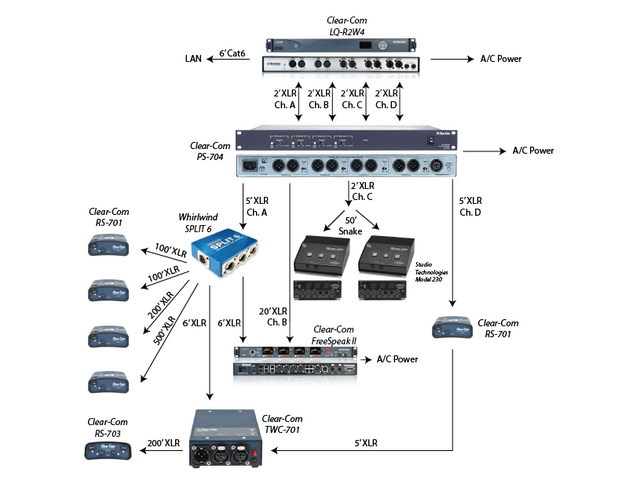Hello.
Attached is a sketch of our Clear-Com system at Harvard Stadium.
Without the TWC-701, we've used this system for a few years, and it's been great. We just added the TWC-701, and now we suddenly have RF Radio interference in the Ch. A headsets (we can hear a nearby radio station). When I remove the TWC-701, the noise is gone. If I remove the Whirlwind SPLIT 6 (but keep the TWC-701) the noise is also gone. The noise is only there when both the TWC-701 and the Split 6 are connected. Any ideas how to get rid of the noise?
Thanks.
Imry
Attached is a sketch of our Clear-Com system at Harvard Stadium.
Without the TWC-701, we've used this system for a few years, and it's been great. We just added the TWC-701, and now we suddenly have RF Radio interference in the Ch. A headsets (we can hear a nearby radio station). When I remove the TWC-701, the noise is gone. If I remove the Whirlwind SPLIT 6 (but keep the TWC-701) the noise is also gone. The noise is only there when both the TWC-701 and the Split 6 are connected. Any ideas how to get rid of the noise?
Thanks.
Imry



